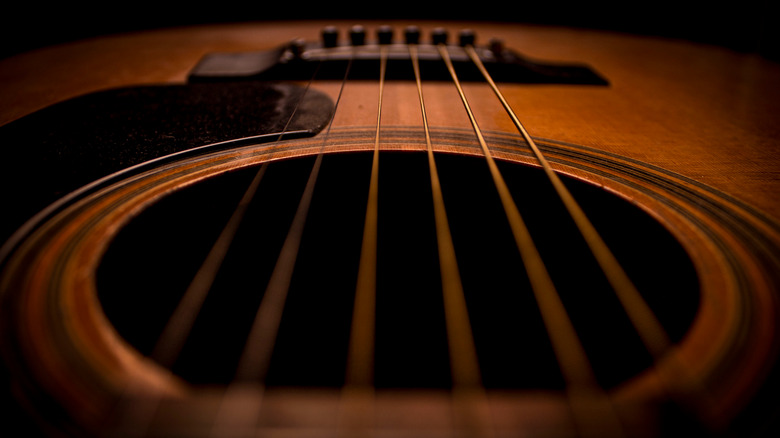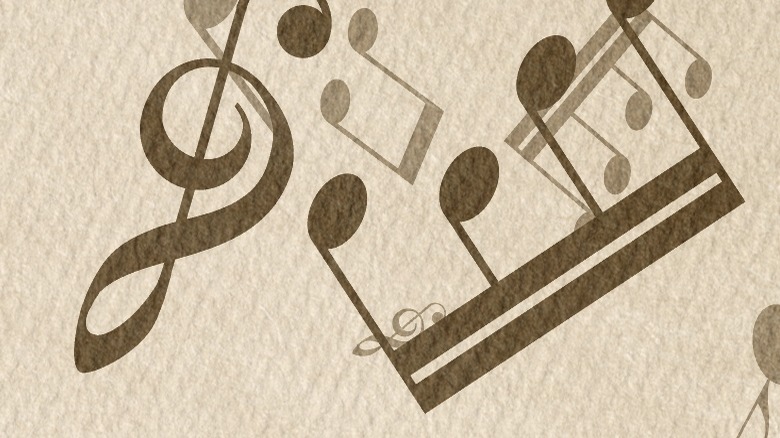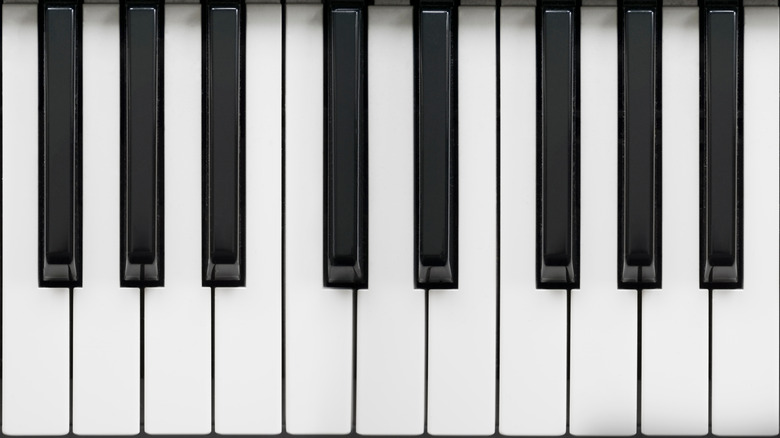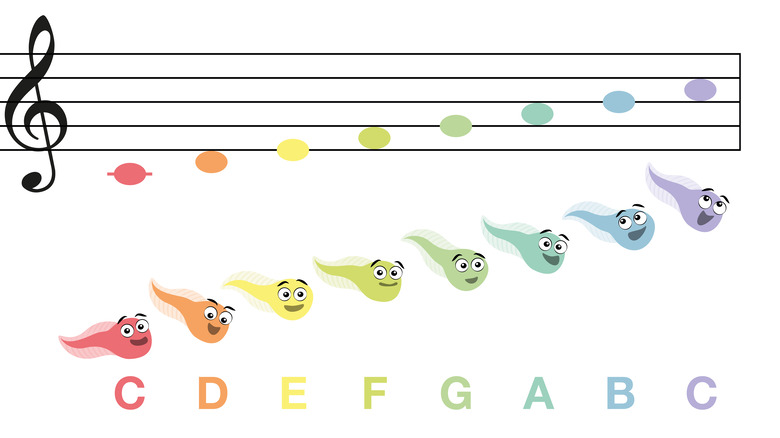Why Do Songs In Minor Keys Sound Sad To Us?
Music has been used by nearly every culture in human history. It is often used in powerful ways that can help change the society in which it is composed, and sometimes even the world. Music is played on the battlefield, during religious ceremonies, at sports events, in concerts, and a seemingly infinite number of other events. Basically, music is acceptable, and often expected, wherever humans get together. But why do we associate certain types of music with different emotions, and is it possible to really decide what music is "happy" and which is "sad"?
In the Western world, music is divided up into different groups of notes based on patterns, which are called keys in music theory. Major keys tend to be the easiest keys to learn for beginner musicians, and they are usually associated with happier-sounding songs, at least to most Western listeners. Some of these songs in major keys that you may know are "Beast of Burden" by the Rolling Stones (key of E major), and "Africa" by Toto (key of A major), according to GetSongKey. However, just because a song is created in a major key doesn't necessarily make it happy; plenty of songs, such as "Imagine" by John Lennon (key of C major), give off a more ethereal, or even sometimes somber emotional response when listening to them, despite being written in major keys.
Minor keys
In contrast, minor keys, which are comprised of the natural minor keys, harmonic minor keys, and melodic minor keys, tend to be more closely associated with what we would consider "sad." "Hurt" by Nine Inch Nails (key of B minor) or "While My Guitar Gently Weeps" by The Beatles (key of E minor) would be considered to be some of these songs (via GetSongKey). There is much debate as to why we create these associations between different musical keys and emotional responses, with many claiming that the emotional feeling of a song comes from the song's cultural context, whereas others say that perhaps there is a universal element to music. According to NME, however, the answer may lie somewhere in between.
In one study, a group of researchers visited the Mafa tribe, a native North African group, and presented them with an array of western music. Next, they had the tribespeople discern what they believed to be happy, sad, or frightening. The researchers also presented these same songs to a group of Westerners and compared the results. They found that for the most part, members of the Mafa tribe agreed with the Western population regarding the emotion evoked by each song, providing some evidence that there may be some universal characteristic to music (via Current Biology, posted at ScienceDirect).
Music theory 101
So why is this the case? In the West, music is divided up into seven different notes, which are considered to be the most basic elements of sound (via Simplifying Theory). These notes are named alphabetically: A-G. Now check the piano keyboard above. You will notice that there are white and black keys, but there are more the latter. The white keys are these basic notes. In order to find the order, find the first pair of white keys that don't have a black key between them. The first white note is B and the other is C. The rest of the notes can be found by counting from there, but after G they restart at A.
Next are the black keys. There are slight derivations that can make the note either "flat" or "sharp," hence where you may hear terms like B-flat or C-sharp. If someone says "play the note A-sharp," they are talking about the black key to the right of the A key. If someone says "play the note A-flat," they are referencing the black key before the note. Thus, B-flat is also A-sharp.
Scale formulas
Now, in order to get to the root of what makes these different scales show different emotions, you must understand the scale formulas. Scales have what are called whole steps and half steps. Using the piano model, start at A. Directly after A is A-sharp, the black key, but right after A-sharp is B. A whole step is when you "skip" the key in the middle. So A to B would be a whole step, but also a whole step up from B would be C-sharp since you skip the middle key which is C. Half steps are when you go directly to the next key, so A to A-sharp would be a half-step and so would B to C.
Music theory has "scale formulas," which allow you to pick any note and know the major scale with that root. Whole steps abbreviated "W" and half steps "H," the major scale formula is "W, W, H, W, W, W, H." The natural minor scale formula is "W, H, W, W, H, W, W." So, starting from C for both formulas, the major scale would be "C, D, E, F, G, A, B, C," and the minor would be "C, D, E-flat, F, G, A-flat, B-flat, C" (via Hub Guitar).
The science behind dissonance
There's one final piece of the puzzle: chords. A chord consists of several notes played at the same time. One common chord is when you play the first, third, and fifth notes of a scale, also known as a triad. For the C major chord, that would be C, E, G, and for C-minor, the notes would be C, E-flat, G. Some psychologists hypothesize that the reason for minor chords sounding sad to us is because the second note in minor chords is closer to the tonic note of the chord, or the note that rings out the most, according to NME. In this example, C and E are farther apart than C and E-flat, with C being the tonic note for both. The closer that two notes are to each other that are played together, the more dissonance it creates, and thus the tension can make us uneasy.
In the same NME article, it is also explained that part of what makes tone so vital to correlating emotional responses may be found in how we talk. Scientists have discovered that speech that is considered "happy" is usually spoken in the same range of notes as major scales, and in contrast, "sad" speech is more associated with dissonant tones such as the minor scales. But other musical elements definitely play a role in how we perceive music, such as rhythm and tempo. For example, slower songs are more often correlated with having an element of somberness, or even sorrow, than their upbeat, faster counterparts.
Context matters
Even though there might be some universal metrics for how we feel about certain musical tones and variations, it would be sound to say that many of those feelings come from our cultural and societal upbringings, which differ from civilization to civilization. Our own music might be starting to shift away from the idea that major keys are happy and minor keys are sad; rather, music may be getting a little more complicated, according to NPR.
One researcher, Glenn Schellenberg, who is a psychologist of music at the University of Toronto, was looking into different music genres and how that is associated with different emotions. He found that as he examined classical music, he was easily able to discern what music was "happy" and what was "sad," but as he listened to more music after the 1960s, the association became more confusing. And over time, minor keys are becoming more and more popular in our culture (via NPR).
When it's all said and done, music can be a very emotional experience, and as our culture gets more and more complex, it wouldn't be radical to say that our music will continue to warp and shift to emulate what we may call the human experience.





